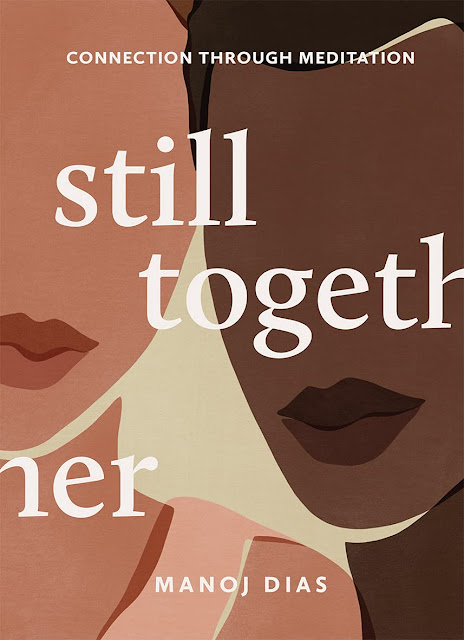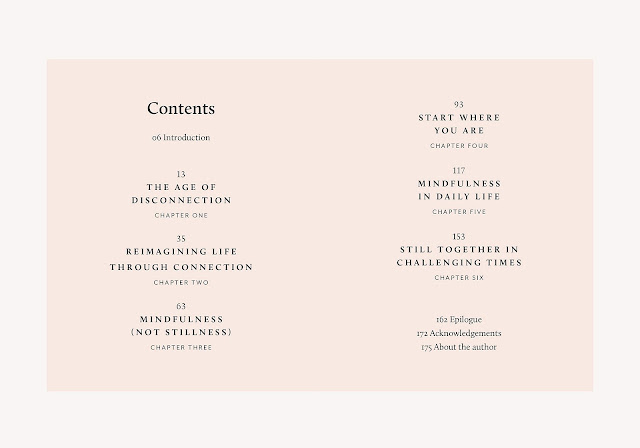Still Together by Manoj Dias
It’s 3am when I pick up a copy of Still Together.
My mind is flooded with thoughts of how disconnected I’ve become. The loss of community I’ve experienced. I look around my room and feel an emptiness. My heart begins to pound within the walls of my chest.
The mats, towels, blocks, and bolsters are piled high in the corner of the room collecting dust. Reminders of my former life.
This time two years ago, I was bound to the yoga and meditation world. My daily practice was what grounded me. The closing of my eyes, the breath-work, the Sanskrit mantras, and the physical asana.
It gave me purpose, connected me, energized me.
And then illness re-entered my life and struck me down, consuming me. Anorexia took its seat at helm, and with it came fatigue, hospitalizations, and the inability to move my body with my breath.
Manoj Dias’ book had sat, unopened, on my coffee table for a few days. I’ve looked up to Manoj for a number of years, ever since completing my yoga training in India in 2015.
Back in Rishikesh, it was all about perfecting the physical postures and inflating my ego. I feel I can admit to that now that I don't post pictures to Instagram anymore, checking for likes and comments from the yoga community.
These days, I close my eyes and pray for silence. I hope for recovery, I manifest self-compassion, and I try to breathe steady breaths. In and out.
Opening his book, I find it’s split up into six sections — the age of disconnection, reimagining life through connection, mindfulness (not stillness), start where you are, mindfulness in daily life, and still together in challenging times.
I’m crying by the time I reach the second page of Manoj’s introduction. It feels like I’ve broken through a barrier of emotions. I have an urge to call on Dias, to sit with him, open up to him, and spill my innermost thoughts.
Anxieties and emotions are climbing to the top of my throat and out through my eyes as I read his honest words and feel a similarity between our stories.
“You are not your thoughts,” he states.
Stepping into chapter one — the age of disconnection. It leads me to question, why do I feel so disconnected? I know there are many reasons. My eating disorder for one holds me back from experiencing many of life’s greatest pleasures.
A full relationship with my partner, where we can experience travel and being together and present at all times. Social interactions, where I can see and engage with connections over dinner parties and meals at restaurants. A fulfilled profession, where I can lead a life that doesn’t involve being locked up within the confines of a hospital ward.
 |
| Manoj Dias, courtesy of @manojdias_ |
Manoj talks of our disconnect in day to day life — be it our addiction to our cell phones, or our disengagement while interacting with others. I reflect, and I can’t remember the last time I was fully engaged in a conversation. My mind is constantly floating off elsewhere, thinking of work, treatment, and the constant anxieties that hound my inner being.
Dias touches on comparison. I feel it, I know many do. “You need to do better,” he says, continuing, “It tells me that I am not enough. I feel like I need to work harder, exercise more, buy better clothes, find cooler friends and travel to more luxurious places.”
I know I felt this deeply throughout my yoga practice — this intense obligation to over perform, to post pictures of perfecting the physical asana as a way to inflate the ego. I took, and retook photos again and again. In fact, I even fell out of a handstand once while taking a photo and broke my foot. Doctors have told me it will never fully heal.
Manoj leans into his vulnerability and touches on the real self vs. the virtual self, admitting, “as much as I strive to be equanimous, I still get angry, binge eat burgers and fries when I’m emotional, and lose my temper at the people I love the most. I’m human.”
His humanness touches me.
Chapter one includes an introductory meditation practice. It’s just after 4am when I reach this offering. I’m on my couch. I reflect on Manoj’s words so far, back to what he’s said over the past thirty or so pages and my eyes sting with tears again. A heavy stream works its way down my face.
I breathe in and out, noticing just how disconnected I feel I’ve become. A sudden realization hits me. The many years I’ve been trying to prove myself to everyone around me. To prove my worth. I feel a sudden urge to take a step back from life, to re-evaluate. To zoom out and look at the entire picture. In dialectical behavioural therapy, it's taught that two things can be true at the same time. I find I'm filled with sadness but also hope.
I dive deeper into the book, and into my inner self.
Manoj poses a question in part two. What is connection? To me, connection is bonding, binding, intertwining, linking, and when one becomes two. Dias includes a quote from Brené Brown’s The Gifts of Imperfection, “the energy that exists between people when they feel seen, heard, and valued.”
When it comes to connecting with ourselves, he touches on how much time we spend caught between past experiences and future fears. A well of anxiety hits me as I think of just how much time I spend thinking back on past failures and future worries. Where will I be after treatment? What if I fail as a writer? What if I’m forgotten? What if this progress I’ve made is for nothing? I miss my old body. I want recovery.
An entire section in the book dedicated to self-love again brings tears to my eyes. Will I ever love myself? I wonder. Will I ever truly be able to face the man in the mirror and accept him? Dias claims that “meditation is a path to self-discovery, but also a path to our innate goodness.”
Manoj touches on the racism he experienced at school which calls to mind the homophobia I experienced. He reflects “on what they might have had to endure in their lives that led them to say what they said. Who taught them to think that way? It had to come from somewhere.” My mum always asked me to consider what was going on at home for those who called me names. They must have been suffering in some way, she always said. These days, I try to cultivate some sympathy. I try to forgive. To move on.
Throughout other chapters in the book, Dias introduces us to mindfulness. I’ve had my fair share of mindfulness teaching, be it though traditional teachings in India, practices in North America, or therapy in a hospital setting.
However, Manoj offers a fresh approach in his book. “Being present doesn’t mean feeling good.” I’m glad he touched on that, because being present can sometimes be the most uncomfortable feeling, driving dissociation, isolation, and avoidance. I haven’t explored Buddhist teachings before, but I feel drawn to the eightfold path.
A part of Still Together that really resonated with me was Start Where You Are — Beginners Mind. Despite my background in yoga and meditation, I am a beginner. I will always consider myself a beginner, open to the possibilities of learning from those around me. Regardless of how much I have learned, I believe there is always room for more learning.
To conclude, Manoj Dias has created a thought-provoking offering. It’s clear he spent a lot of time contemplating and putting together this book. It’s insightful, and filled with wise and meaningful knowledge. The mindfulness exercises and meditations spread throughout are beneficial for anyone wishing to reconnect.
Throughout the book, there are quotes from some of our greatest teachers, little sparks of hope and inspiration—coming from people like Thich Nhat Hanh, Steve Maraboli, Suzuki Roshi, and Jack Kornfield.
The illustrations by Sacrée Frangine are beautifully calming. Reading this book throughout the night brought a stillness to my mind. Dias writes with clarity and is open-minded and honest.
As someone also drawn to design, publishers Hardie Grant and team did a lovely job with this book. It’s the perfect size and pieced together wonderfully. It’s also the kind of book that you can dip in and out of, finding sections and exercises that work for you in moments of anxiety or distress.
 |
| Manoj Dias, courtesy of @manojdias_ |
Manoj Dias has helped thousands of people to embrace stillness of mind and body, enabling them to live fearlessly on the path to a happier and more meaningful life. His teaching and practice is informed by Buddhist philosophy, psychology and social justice principles, with an emphasis on creating accessibility for everyone.
 |
| Courtesy of Sacrée Frangine |
Sacrée Frangine is a creative duo of artistic directors and illustrators composed of Célia Amroune and Aline Kpade. First of all childhood friends, it’s around a mint tea that they decided in 2016 to unite their love of graphics and colors around common projects. The work of the Frangines is inspired by portraits, still lifes and feminine themes that explore the beauty of simple things and everyday life.




